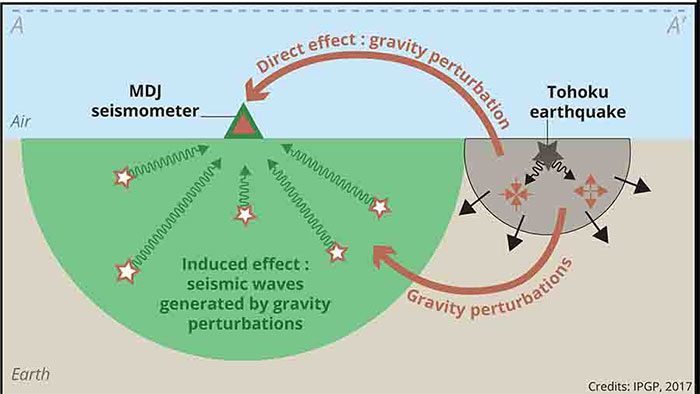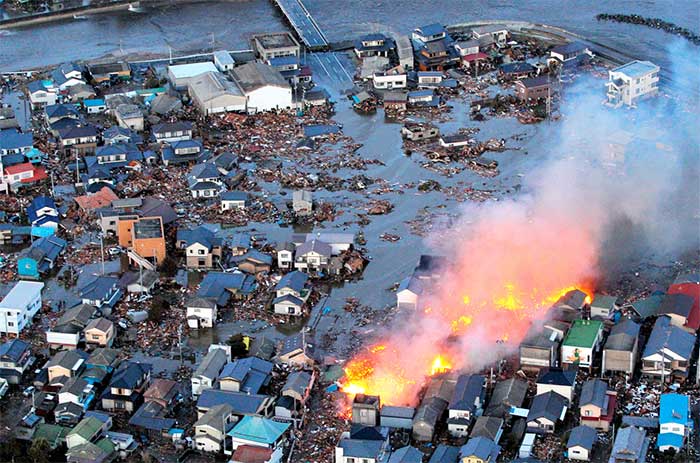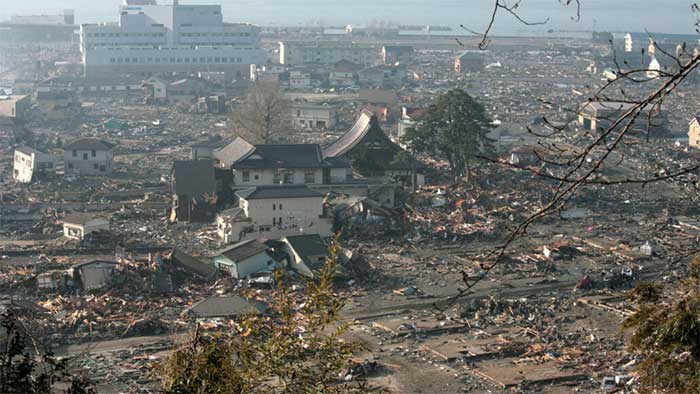Two minutes after the largest tectonic plate in the world shook off the coast of Japan, the country’s meteorological agency issued a final warning to approximately 50 million residents: A tsunami was generated by an earthquake heading toward the shore. However, it took several hours after the waves arrived for experts to assess the true magnitude of the Tohoku earthquake that occurred on March 11, 2011.
In fact, this earthquake reached a magnitude of 9 on the Richter scale—releasing an amount of energy more than 22 times greater than experts had predicted and resulting in at least 18,000 fatalities.

Gravity wave: This is a case of gravitational waves on a planet, where oscillations alter the environment. The gravity waves observable to the naked eye include waves on seas, lakes, tides, tsunamis, winds blowing over mountains, and waves in clouds… created when the atmosphere or the surface of a lake or sea is disturbed.
However, scientists have now found ways to estimate the size of earthquakes more accurately and quickly by using computer algorithms to determine the tremors from gravitational waves at the speed of light.
Richard Allen, a seismologist at the University of California, Berkeley, who was not involved in the research, stated: “This is a completely new way to detect large magnitude earthquakes. If we deploy this algorithm, we will have additional grounds to determine the magnitude of an earthquake, while also pushing warnings to affected areas more quickly and accurately.”
Scientists typically detect earthquakes by monitoring ground vibrations, or seismic waves, with devices called seismometers. However, the warning signals they can provide depend on the distance between the earthquake and the seismometers. Meanwhile, warning networks in Japan, Mexico, and California can only function effectively for relatively small geological tremors. Furthermore, when earthquakes exceed 7 on the Richter scale, seismic waves can saturate the seismometers. This makes detecting and warning about large earthquakes, such as Japan’s Tohoku earthquake, inaccurate.

The Tohoku earthquake that occurred in March 2011 is recorded as the largest earthquake in Japan’s history. It was this earthquake that triggered a massive tsunami, killing thousands and causing the meltdown of three reactors at the Fukushima Daiichi nuclear power plant.
Recently, researchers involved in the search for gravitational waves—ripples in spacetime created by the movement of massive objects—have realized that these gravitational signals, transmitted at the speed of light, can also be used to track earthquakes.
Bernard Whiting, a physicist at the University of Florida, who has worked on the Laser Interferometer Gravitational-Wave Observatory, noted: “The idea is that as soon as mass moves anywhere, the gravitational field will change, and… everything can feel it. The astonishing thing is that the signal will be present even in seismometers.”
In 2016, Whiting and his colleagues reported that conventional seismometers could detect these gravitational signals. Earthquakes lead to significant changes in mass; these shifts create a gravitational effect that distorts both the existing gravitational field and the ground beneath the seismometers. By measuring the differences between these two systems, scientists concluded that they could create a new type of early earthquake warning system.
“Gravitational signals appear on seismometers before the first seismic waves emerge. By combining signals from dozens of seismometers, scientists can identify patterns to interpret the size and location of significant events,” Whiting explained.

Currently, this model and method will not be effective for earthquakes with magnitudes below 8.3 on the Richter scale. Below this threshold, gravitational waves are too weak compared to seismic waves, making them harder to detect.
Now, Andrea Licciardi, a postdoctoral researcher at the University of Côte d’Azur, and his colleagues have developed a machine learning algorithm to perform this pattern recognition. They trained the model on hundreds of thousands of simulated earthquakes before testing it on real data from the Tohoku earthquake. The model then accurately predicted the earthquake’s magnitude within about 50 seconds—much faster than other modern early warning systems.
Gravitational signals are too weak to detect earthquakes smaller than 8.3 on the Richter scale with current technology, and the system cannot provide many advance warnings in earthquake-prone areas already covered by seismometers. However, it can provide more reliable estimates of the size of significant earthquakes, which is crucial, especially for predicting tsunamis that often take an additional 10 to 15 minutes to arrive.
With this technique, seismologists in Japan can accurately determine the magnitude of earthquakes like Tohoku and issue appropriate warnings.
However, at this time, this model and algorithm have not yet been widely implemented. It is primarily set up for deployment in Japan—but only for earthquakes caused by a specific fault line capable of producing “large earthquakes.” Additionally, this algorithm needs to be specifically trained for use in different regions as it is still in its first generation and is not yet compatible with areas that have different usage needs.

















































